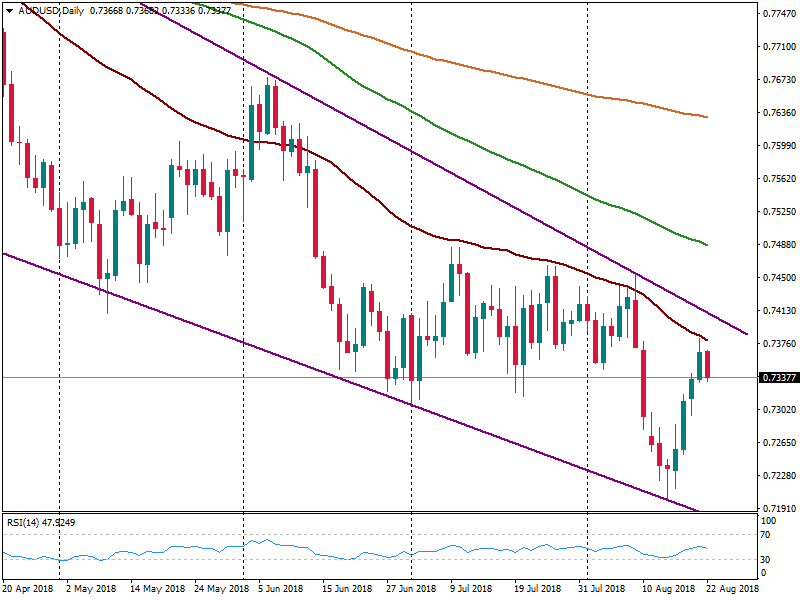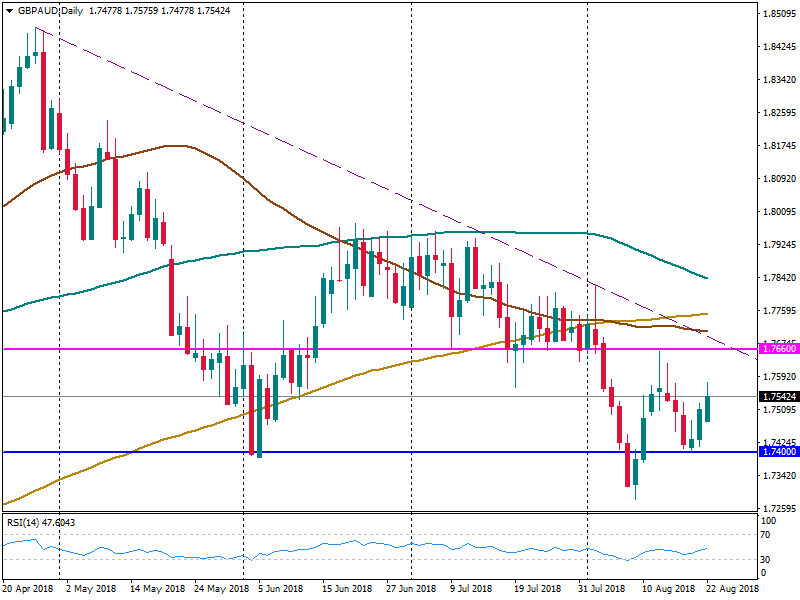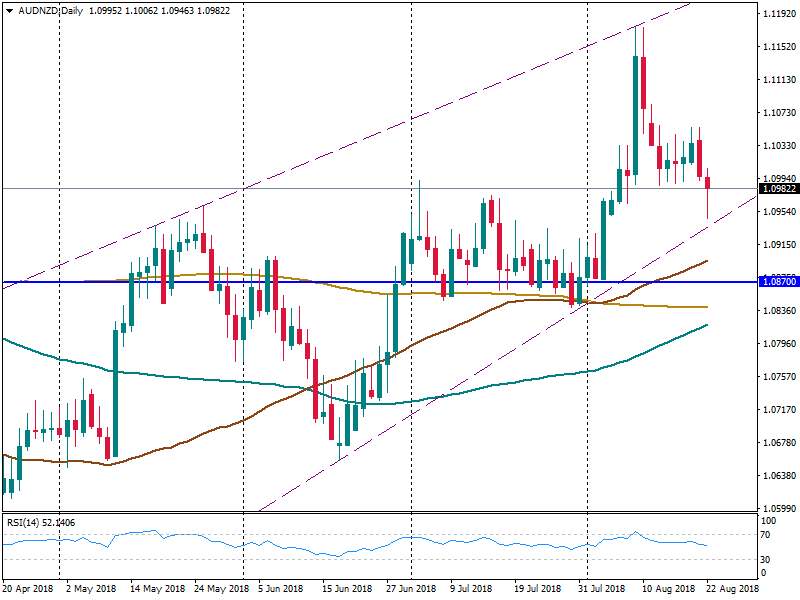The RBA needs a weak AUD
This week the governor of the Reserve Bank of Australia Mr. Lowe proved again that the bank wants to see the weak AUD and interest rates remaining at a record low “for a while yet”. As a result, Westpac worsened its forecast for the future rate hike. If before the bank predicted the rise to the end of 2019, now it anticipates the rate to remain unchanged through 2020. It’s a negative signal for the currency especially in the environment of the world rates’ rise.
Although the Australian dollar managed to rise despite negative comments from the central bank officials, it stays under big pressure. The current rise was caused by the falling USD. However, the US dollar is not expected to fall for long, as the Federal Reserve will raise the interest rate at least once this year.
Moreover, trade wars affect the Australian currency a lot. Any escalation of the dispute pulls it down. As the soon end of the trade wars is unlikely, the AUD will be pressed.
As we can see, there are high risks that the Australian dollar will depreciate even further.
Let’s have a look at technical setups.
AUD/USD
The pair started recovering on August 16 because of the fall of the USD. However, as soon as the USD started recovering, AUD/USD turned around. It means that the Australian dollar is too weak to fight with the USD, doesn’t it?
The Australian dollar is weaker than the USD and it’s not a secret. The Fed is going to raise the interest rate again this year when the RBA is anticipated to keep it on hold for long.
Moreover, according to the relative strength index, the pair isn’t oversold yet (the index is above 30). It means that there is a space for the further fall. As a result, the downtrend is anticipated to remain.

GBP/AUD
If the weakness of the AUD against the USD is not questionable, the situation with the British pound is different. The GBP is weak because of the Brexit deal. However, if we compare the monetary policy of the RBA and BOE, the British pound is in a more favorable position. The Bank of England raised the interest rate in August and plans one more rate hike in the near future.
In the near term, the pair is anticipated to trade within the channel of 1.74-1.7660. In the longer term, the direction of the GBP/AUD pair will depend on trade wars and Brexit news.

AUD/NZD
Usually, these two currencies move in the same direction, that’s why it can be difficult to see who is stronger.
Both central banks keep the interest rate on hold. However, there are risks that the Reserve Bank of New Zealand will cut the interest rate that is more negative signal for the NZD. It may give additional support to the Australian dollar in the longer term. So the long-term uptrend is anticipated to continue.
In the near term, we can see a correction down as recently the relative strength index showed that the pair was overbought.

To conclude we can say that the Australian dollar stays under pressure as the central bank wants to see the weak currency. However, if we consider the AUD in pairs with such currencies as the GBP and the NZD, the strength of the AUD will depend on news and economic data.